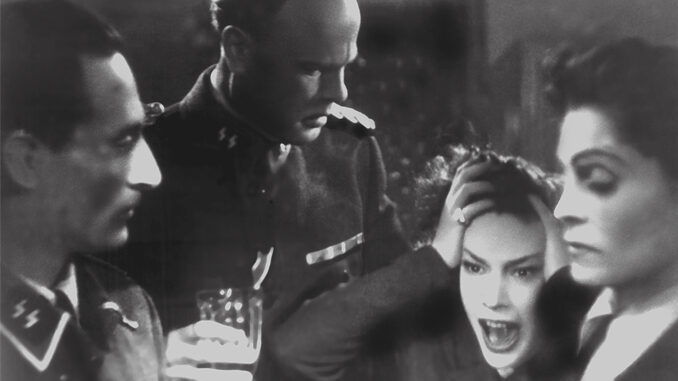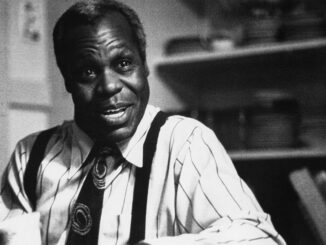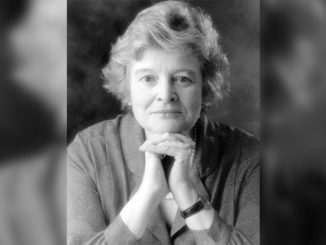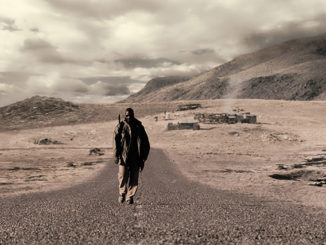
by Kevin Lewis
Roberto Rossellini’s Open City (Roma, Cittá Aperta), which premiered in Italy 65 years ago in September 1945, revolutionized the perception and marketing of foreign films in America when it opened in New York just five months later. The film, which won the Grand Prize at the Cannes Film Festival and the New York Film Critics Award for Best Foreign Film, brought the word “Neorealism” (a fiction film using documentary techniques) into the cinema lexicon. Over the next 20 years, the Italian Neorealistic style of its director was copied by the British, the French and the American independents.
Arthur Mayer, the Hollywood film executive who organized the War Activities Committee of the Motion Picture Industry, saw the film in Italy. He and Joseph Burstyn bought it for their distribution company, Mayer-Burstyn. Very few American cinemas played foreign films, but Open City played for over a year in New York and enabled the fledgling distribution company to import many more foreign films. New York had a large native Italian population and they—and demobilized American GIs who were treated as paisanos by the liberated Italians— mobbed the theatre.
The film was nominated for Best Original Screenplay by the Academy of Motion Picture Arts and Sciences for 1946 (losing to The Best Years of Our Lives)––ironic, since the English-language subtitles were sparse. Federico Fellini, in his first nomination of many, shared the honor with Sergio Amidei (co-screenwriters Rossellini and Alberto Consiglio were uncredited). It was only the second foreign language film to be nominated in that category (the first was Marie Louise the previous year). The Oscar for Best Foreign Language Film did not yet exist.
Open City was conceived in chaos and brutality. The three main thematic characters––the Roman Catholic priest, the Communist partisan and the widowed Italian mother––are all killed in graphic ways by the Nazis during the waning days of World War II. This is the reason Rossellini and his colleagues made the film: to explain how the cradle of Western Civilization was almost extinguished by totalitarianism. As the director related to Cahiers du Cinema in 1955, “Everything in Italy, including the cinema, had been destroyed… The absence of any organized industry favored the least banal undertakings. The field was wide open for innovation.” Ironically, Rossellini’s previous experience with the Italian film industry was as a director of movies produced by Vittorio Mussolini (son of “Il Duce” Benito Mussolini), extolling Fascist military heroes.
After the Allied invasion of Italy in September 1943, Mussolini was deposed by a new Italian government, which joined the Allies against Germany. Mussolini was imprisoned by the new Italian government but was rescued by the Germans who put him in charge of a puppet government in areas of Italy that they controlled––until April 28, 1945 when he was captured and executed by the partisans. The Italian partisans––who were the Italian Communist Party (PCI), the Italian Socialists, monarchists, the Roman Catholic Church and other groups––collaborated with the Allied Forces and the Office of Strategic Services (OSS, the forerunner of the post- war CIA). Rome, which had been declared an “open city” (meaning that the Nazis and Allies would not bomb the historic city filled with art treasures), was liberated on June 5, 1944 by the Allies, the day before the Normandy invasion.
During this period, Rossellini and his co-screenwriters created a script involving the partisan resistance against the Nazis. Rossellini and his team, which included veteran Italian cinematographer Ubaldo Arata, shot the film, without steady funds, beginning in January 1945.
“There was only just enough to pay for the raw film, and no hope of getting it developed,” Rossellini told Cahiers du Cinema.“ I didn’t have enough to pay the laboratories. So there was no viewing of rushes until shooting was completed.”
Rossellini had to raise more money to edit the film. His editor Eraldo Da Roma, who later cut many of the great Italian classics directed by Vittorio de Sica and Michelangelo Antonioni, as well as Rossellini, accomplished miracles with the piecemeal lengths of film, even though it was shot on outdated negative stock, was devoid of coverage and link- age shots, and was processed haphazardly. Open City was shot MOS (sound was dubbed in later), because it was filmed in the teeming streets and in bor- rowed apartments overlooking those streets. The jump-cut editing created newsreel-like documentary images and immediacy. Audiences thought they were reliving recent history, which they were. Some of those extras in the crowds, when the Gestapo was dragging partisans onto the transports, were probably eyewitnesses to the same real-life events a few months before.
Rossellini preferred non-professional actors because he could develop ideas without thespian interference. But Open City used two popular film stars (remark- able since the film reportedly only cost about $18,000 to produce, by Mayer’s calculations). Aldo Fabrizi, an adored vaudeville and film clown, was cast as the tragic priest. Anna Magnani, who previously played comic characters in Fascist-era Italian movie comedies, became an internationally acclaimed dramatic actress with her role of the widowed mother Pina.
The Criterion Collection, in what is truly one of the great restoration efforts––and certainly the DVD set of this year so far––has painstakingly restored three Rossellini films and released them as Roberto Rossellini’s War Trilogy: Rome, Open City, Paisan, Germany Year Zero. The digitally restored images, based on the 35mm restoration by Cineteca Nazionale in 1995, are remarkably sharp and clear. Newly commissioned English subtitles for Open City, as opposed to the sparsely translated ones in the original US version, clarify many of the characters and themes the way the director intended.
Laurence Kardish, senior curator, department of film, at New York’s Museum of Modern Art, acknowledges that the characters are much better defined for non-Italians in the Criterion version than the original English-subtitled release print, which MoMA owns and exhibits. As Kardish points out, there is no mention of Communists in the original subtitled release print. The partisans, who were of various political stripes as previously mentioned, interacted with each other in guerrilla and intelligence- gathering missions against the Germans and Fascists.
The Catholic priest, also a partisan, works with the Communist partisans, passing money in prayer books––a most fascinating relationship because Communism was the nemesis of the Catholic Church. By making all the parti- sans politically neutral, the original US version robs the story of its political complexity, in essence, making the conflict foggier. The (unmarried) pregnancy of Pina by her Communist partisan fiancé is not mentioned in the original subtitles either.
When Pina is shot by the Gestapo, in the famous reverse tracking shot chasing after the transport, the priest cradles her in a Pieta motif, recalling the Michelangelo statue of Mary cradling the dead Christ. The famous conclusion in which the children, who acted as partisan couriers, watch the priest being shot to death by the Gestapo major––after the Italian soldiers refuse to kill him––and then walk off to an uncertain future is unforgettable.
Thanks to Criterion’s restoration that is also a revelation, the meaning of Open City is no longer lost in translation; its universal themes of opposing philosophies working together toward a common goal are made clear, lifting some shrouds from the fog of war.





